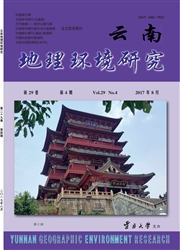

 中文摘要:
中文摘要:
旅游村作为新型乡村旅游地,是国家乡村旅游"百千万工程"中最基础的组成部分。从景区依托型旅游村的视角出发,选取黄山山岔村与黄山风景区作为案例地,运用多元回归分析方法,对两者之间耦合发展进行研究。结果显示:(1)黄山风景区发展大力提升了山岔村社会经济文化水平;(2)黄山风景区发展对村落环境影响较小;(3)黄山风景区发展对村落社区参与有影响,但并不显著。从景区与村落的发展特征出发,较为系统地揭示景区依托型旅游村与核心景区耦合发展的内在动力源于位差潜势、催化潜势、管理潜势和多稳定潜势,这些形成了景村耦合发展的演化机制。在此基础上,提出了景村耦合发展的4条途径。
 英文摘要:
英文摘要:
Tourist Village,as a new type of rural tourism desitination,is one of the most basic components in the national rural tourism "One Hundred,One Thousand and Ten Thousand Project".From the scenic-based tourism village's perspective,the paper selects the Mt.Huang Scenic Area and Shancha Village as the case place,analysises coupling development between the village and the core scenic area using multiple regression analysis.The results show that:(1)the development of Mt.Huang Scenic Area energetically promotes the social,the economic and cultural level of Shancha Village;(2)the development of Mt.Huang Scenic Area has less environmental impact on Shancha Village;(3)the development of Mt.Huang Scenic Area is influential to the village community participation,but is not remarkable.Based on the development characteristics of scenic area and village,the paper systematically reveals that endogenous capacity of coupling development between scenic-based tourism village and the core scenic area stems from the difference potential,the catalysis potential,the management potential and the stably potential,which form the scenery-village coupling evolutionary mechanism.At the same time,the article proposes four ways of tourism coupling development between Mt.Huang Scenic Area and Shancha Village.
 同期刊论文项目
同期刊论文项目
 同项目期刊论文
同项目期刊论文
 期刊信息
期刊信息
